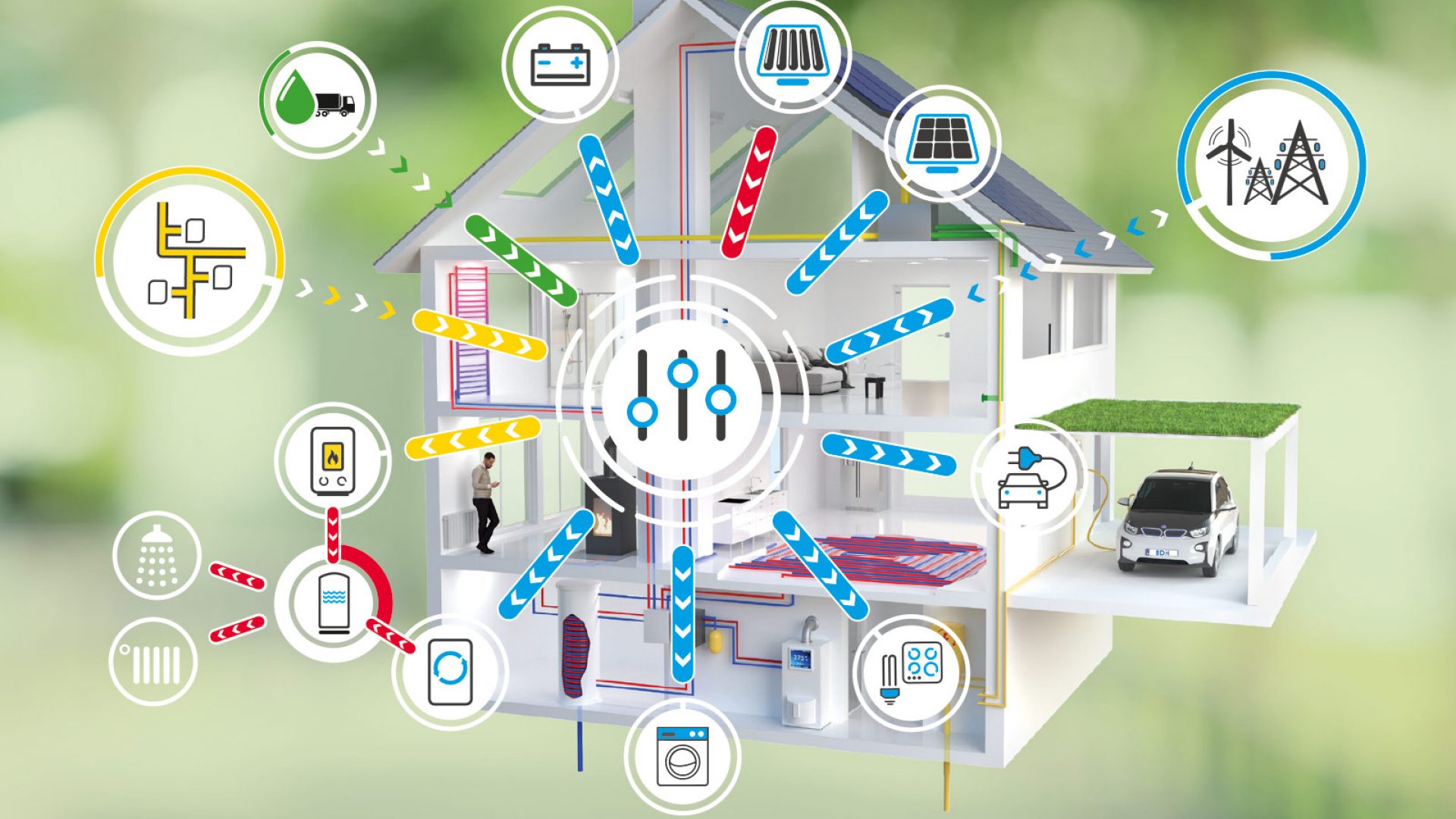Our energy system is on the brink of a revolution, which is leading to a veritable paradigm shift. In future, electricity will be produced from renewable sources, whose yield is volatile and can be controlled only to a limited extent.
The end customer is then no longer merely a consumer of energy, but becomes a prosumer who themselves consume a part of the electricity generated and sell the rest or feed it into the grid. Since it is considerably more difficult to control generation as compared to previously, this leads to the necessity of controlling the consumption – i. e. load management. Load management is the temporal offset in electricity consumption depending on various parameters. In doing so, it is possible to consider the amount of renewable energy available or the grid utilisation at the moment. However, this requires communication between generators, consumers and electricity grids in real time. In most cases today, this is not yet possible at all since there is no appropriate communication link in place. This is where digitalisation of the energy revolution comes into play, and the foundation stone for this is being laid with step-by-step implementation of the smart meter roll-out nationally. The reason is that smart meters are not only intelligent electricity meters: they also provide a safe and secure communication platform that enables the elements of the energy system to be adjusted and aligned with one another.
Networking in the building
This development is also changing the role of the building: It increasingly becomes a place of generation and also a flexible storage facility of energy. The change in role leads to two very favourable resulting effects. On the one hand, it enhances the degree of building self-reliance, the building literally becomes more independent. As a result of this, demand on the electricity grids is lowered and the energy revolution receives a crucial impetus. On the other hand, coordinated control of the energy flows in the building provides flexibility that can be used to serve the grid and the system – against remuneration for the customers.
Energy management system controls energy-related components
The requirement for this is not only that the building is networked with the energy system but that the energy-related components of the building are also networked to one another. Energetic networking within the building means that energy can flow from one system to another, for example, from the photovoltaic system to the heat pump or to the electric car. However, it also means that these systems can communicate with one another in order to coordinate and agree with optimal utilisation of the energy. Of course, in the process, the needs of the residents are also of significance. In this way, photovoltaic systems, heat pump and storage facilities can be coordinated so that the energy currently generated by the PV system is not used immediately by the heat pump, but is stored for the electric car which will soon be arriving home. Such processes are referred to as energy management. They are controlled by an energy management system (EMS).



